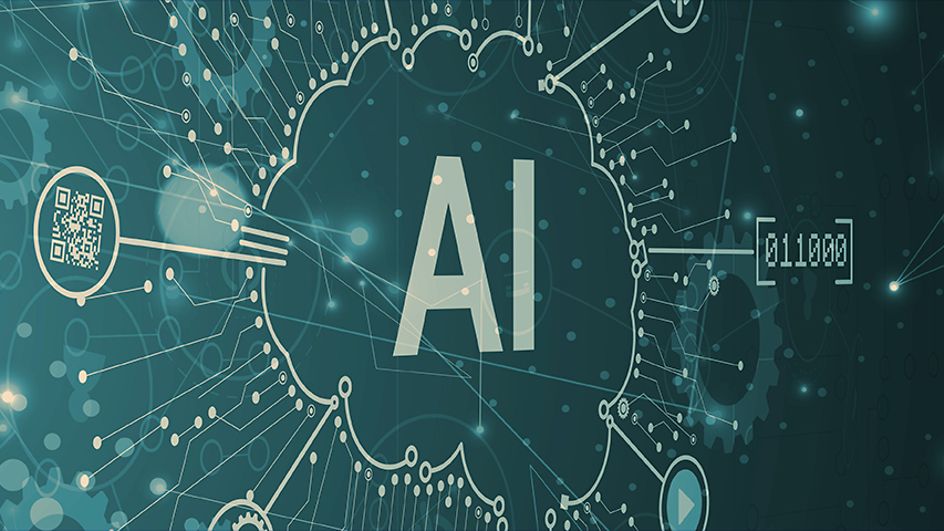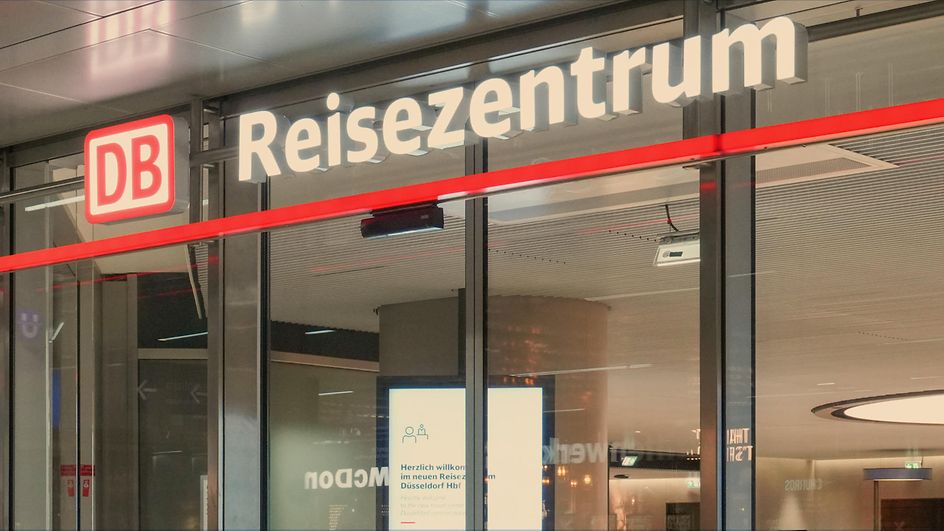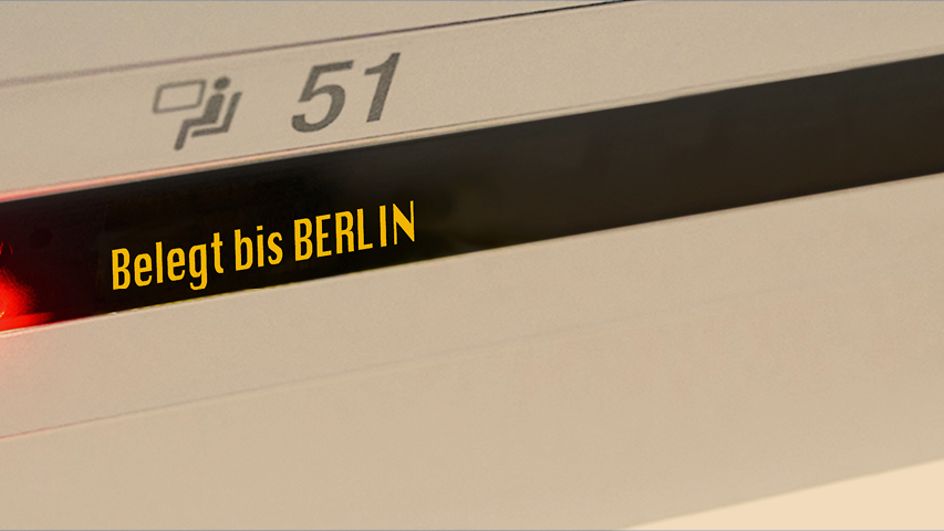The breakdown service for train operations
Article: How long-distance traffic avoids train breakdowns and reduces delays with real-time data
An error message or a breakdown of a train can cause a chain reaction of delays in the worst-case scenario: a queue in which one train holds up subsequent trains. With real-time telemetry from the vehicles and data solutions from DB Systel, the experts in "disruption analysis" at DB Fernverkehr can now support their colleagues in operations immediately during disruptions or error messages on the track. Specifically, these are the dispatchers and train drivers. This solution is the "Digital Back Office." It has consistently exceeded all goals from the start, aiming to prevent vehicle-related delays and breakdowns.
Using crucial data at the right time
A modern train has a multitude of sensors – up to 40,000 per vehicle – and continuously sends these "to the shore," as it is referred to in railway terminology. The "disruption analysis" team at DB Fernverkehr has been evaluating these telemetry data for many years, allowing them to detect technical issues, for instance. "We check: How many minutes of delay were there, and how many of them have a vehicle-related cause?" says Sandra Siebert, Product Owner in this team. "We look for causes and their solutions: What can we do better next time?" After all, every breakdown, every failure affects the passengers and the entire rail network.
This work has long helped improve the reliability of vehicles, gather insights, and design solutions and guidelines. Since 2015, there has been a data warehouse where all vehicle data have been recorded and evaluated later. However, the experts no longer wanted to just learn from the past. In many cases, they realized: "We could have helped the train avoid failing - if only we had been there live," recalls Sandra Siebert. That was the beginning of the Digital Back Office: "We need people who are there live, and we especially need the IT in the background."
The sensors reveal more than the train staff sees
Some errors could be fixed with a complete view of the data. "Some things are opaque," explains Sandra Siebert: "During the journey, train drivers see all travel-related information on their display. In the background, the staff in operations receive additional diagnosis messages that, with the help of complex algorithms, analyze the technical condition of the trains and can identify potential damages before they occur. The algorithms were developed in collaboration with DB Systel and are continuously optimized by us."
"So far, we have not systematically received these data in real-time. That was the last mile we had to cover. If we are fast today, we have already given appropriate advice to the hotline before the train drivers even call."

In many such cases, the telemetry data and the experience of the "vehicle analysis" team provide clarity or assistance. Ideally, a train is back in operation after a few user actions by the train driver, instead of being towed away. Occasionally, the Digital Back Office can also give a preventive tip to switch or restart a technical system at the next opportunity to avoid emerging problems. The experience of the analysis professionals can also save time on the tracks even when a train definitely needs to be towed away, and further attempts like a system restart would purposelessly waste time. At the same time, the data insights help accelerate repairs when errors have already been narrowed down before the train arrives at the workshop.
Targeted prevention of delays
Besides technology, experts are an essential component of the Digital Back Office: Three experts now work in shifts, functioning as the human interface directly at long-distance traffic dispatching. There, they monitor messages in a live ticker on a new dashboard, the heart of the Digital Back Office. "This live ticker is our major advantage," says Sandra Siebert proudly: "In it, our three experts can see what disruptions exist. Each comes with priorities and remedial texts, which they can share with the respective dispatcher or train staff as a tip." These can be specific technical faults, as well as important railway operational notes – the ticker connects current messages with the accumulated knowledge from years of vehicle analysis.
For example, dispatching can use the hints to rearrange certain vehicles so that a minor defect is repaired as efficiently as possible after the next ride during maintenance. Or potential disruptions are preemptively avoided by swapping out a vehicle before the next trip because a problem is looming. Train drivers ("TF") receive tips and solution proposals via the "TF Hotline." Here, they can call and get help with questions or disruptions. The experts pass on breakdown assistance information to the hotline staff, who can ping the TF so they call back when possible. Due to safety reasons, it is not possible to call train drivers directly.
The new data chain from vehicle to dashboard
DB Systel was involved in the implementation of the IT foundation for the Digital Back Office from the start, reports Sandra Siebert. Michael Domke has supported the vehicle analyses and the neighbouring "fleet monitoring" team of long-distance traffic for a long time: "Since we have always successfully collaborated with Michael's team, it was clear to us that we will work with them again here." The cooperation between DB Systel’s data professionals and the analysis experts of long-distance traffic is very well-established: "We always work in tandems," reports Sandra Siebert. "We always have at least one colleague from DB Systel and one or two from the specialist area working on a topic together. It's not just that we hand over the requirements, but we continuously exchange ideas and work together on successful implementation."
"The technical challenge was to get the data into our system as quickly as possible across many subsystems," recalls Michael Domke. Sensor data and error messages from different vehicle types are merged here, evaluated with algorithms, prioritized by weight, and linked to solution proposals from the database. The dashboard and ticker are based on Oracle's low-code solution APEX. "APEX is included in our enterprise licenses. Consequently, we can provide it to many users without additional costs, which was important to us," says Michael Domke.
"We had the requirement to prevent so-called ‘operational lost units,’ for example, to avoid delay minutes or disruptions. And we have always exceeded these goals."

For the smooth journey of data from the train to the dashboard, DB Systel's data team has unified systems, created and integrated new interfaces: "We are not only talking about a new presentation here but also about sensibly connecting the data." The three experts now see all crucial train information in their dashboard: disruption and localization data, whether something was noticeable in recent days, the condition the train set off in the morning, and the accumulated knowledge about the errors – including the success probability of these tips. This knowledge database is continually updated. New insights from the teams automatically end up in the database and do not need to be shared internally.
The new solution generates 1,000 tips per month
The team looks after all long-distance vehicles across the entire rail network. "We process around 1,000 ticker entries per month – meaning we derive a relevant operational tip from it," reports Sandra Siebert. "In some cases, we prevent a breakdown; in others, we reduce delay or improve quality." The avoidance of 'secondary delays' of other trains behind the defective train is not even included here.



